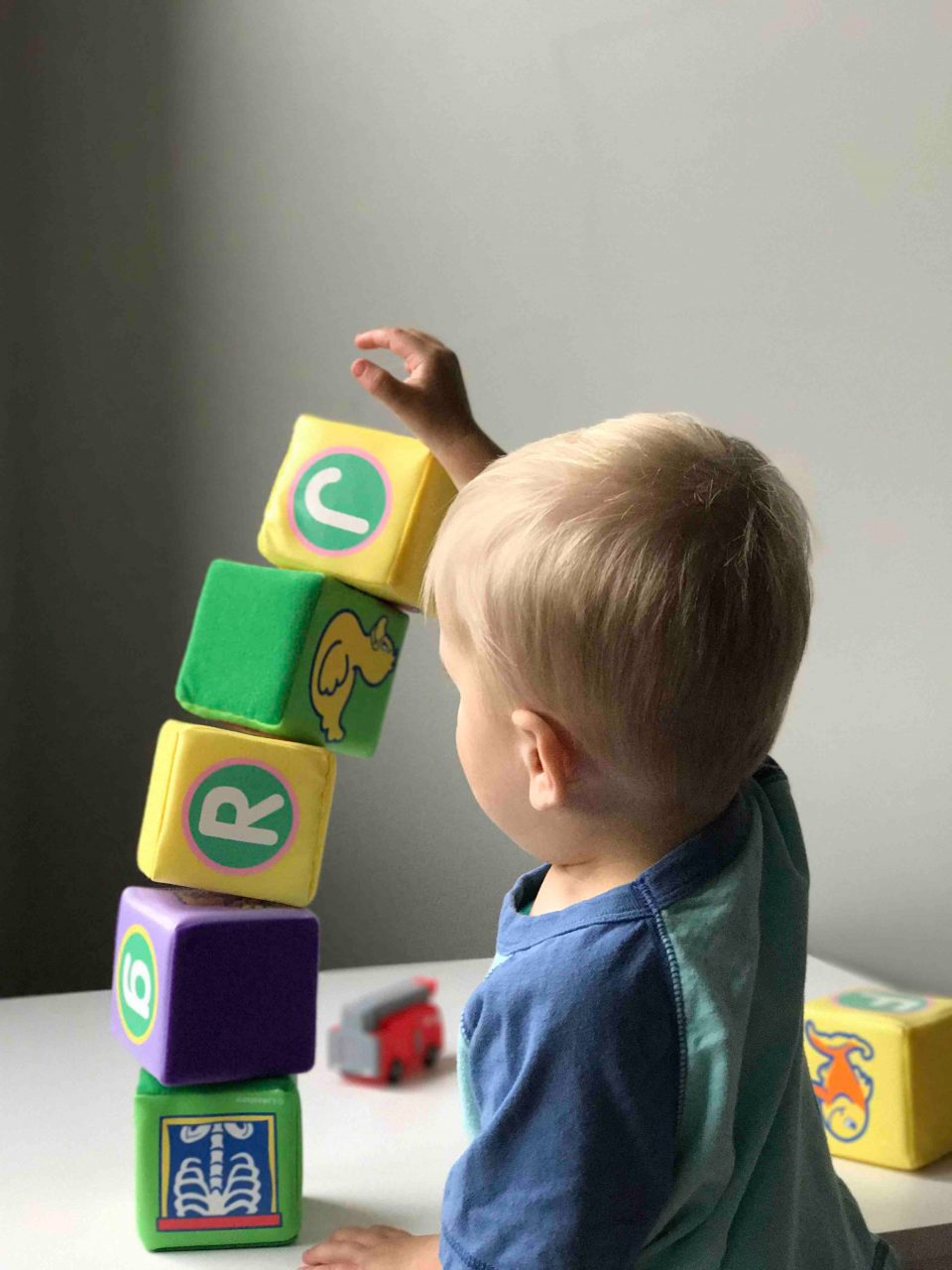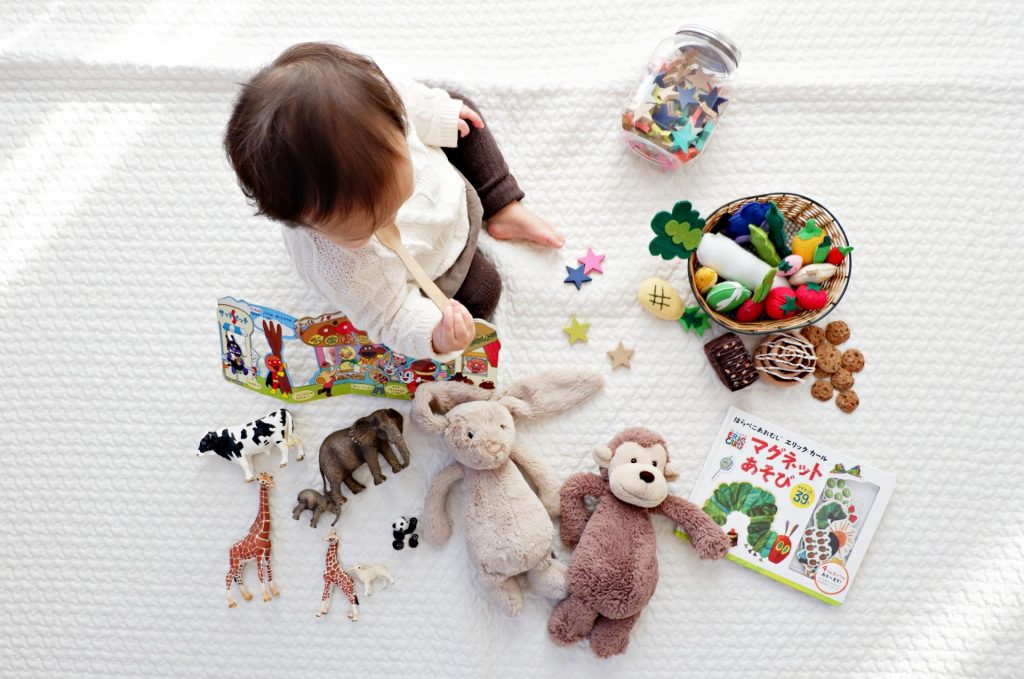Deb’s Key Takeaways
- Increasing gross motor skills and strength in sitting/standing allows hands to be free for play.
- Increasing eye-hand coordination allows play with smaller objects.
- Development of two-handed play in preparation for activities of daily living.
Things that may affect fine motor development
- Delayed gross motor skills.
- Poor vision.
- Poor hand strength.
- Delays in coordination development.

When to ask for help
Development of fine motor skills 6-12 months
6-9 months
Fine motor development is important because during this time your baby learns to pick up small objects, use both hands together, and turn their palm face up.
They develop early pincer grasp –
- The use of the index finger and pointer finger together while tucking the other fingers away.
This allows:
- Self-feeding small pieces of food.
- Can explore an object in one hand.
- Develops hand skill and strength.
- Development of touch in sensitive tips of fingers.
- Preparation of hand for tasks of daily living.
Holds objects in two hands –
- Development of the skill to use both hands together.
- Development of use of hands in the midline (front of body).
- Strengthening of hands and arms for more independent skills.
Turns palm face upwards –
- Development of turning hands up allows more control for self-feeding.
- Allows exploring toys in hands.
- Prepares the baby’s hands for more complex fine motor skills.

9-12 months
In these few months, babies control of their hands become more and more skilled and their play and communication using their hands becomes a large part of their daily play.
They develop:
- Pointing with index finger.
- Self-feeding.
- Asking for something. (e.g. more cookies, toys out of reach).
- Drawing their parent/carer’s attention to something interesting.
- Hand skills.
Two-handed play and independent use allows babies to:
- Bang objects together.
- Clap hands.
- Prepare hands for activities of daily living, e.g. dressing/eating.
- Explore objects with two hands, e.g. undoing lids, etc.
- Promotes learning and problem-solving.
- Voluntary release.
- Give objects to parent/carer.
- Promotes eye-hand coordination.
- Develop block and container play.
- Turn pages of a book while holding.

Ways to develop fine motor development:
6-9 months
- Give them small pieces of food to develop pincer grasp.
- Give them toys to bang/drum/hammer, etc.
- Give them a bottle to hold.
- Help them move an object from hand to hand.
- Long handled toys are easier to move from one hand to the other.
- Give them toys with ribbons, etc to pull.
- Give them toys that you have to pull pieces out of.
- Give them a toy in each hand – blocks, small rattles, etc.

9-12 months
- Help your baby point at body parts.
- Cause and effect toys that you can operate by using a finger.
- Help them turn light switch on/off.
- Blow bubbles for them to pop.
- Give a crayon.
- Point at objects in books with them.
- Help them turn pages of a book.
- Give them containers and toys to put in/take out.
- Blocks to stack.
- Spoon for self-feeding.
- Give them toys to screw/unscrew.
- Offer single puzzle pieces/posting toy.

Things that may affect fine motor milestone development
- Low muscle tone – i.e. floppy muscles.
- Delay in tummy skills/sitting.
- Intolerance to new sensory experiences.
- No interest in self-feeding.
- Poor development of finger and hand strength.
- Delayed visual motor development.
- Delayed planning of movement/coordination.

When to ask for help
- If your baby is not pointing to show you objects by 10-12 months.
- If they can’t pick up objects with thumb and index finger by 9-10 months.
- If they can’t hold objects in 2 hands by 8 months.
- If they are not releasing toys without being forced by 9 months, not giving you a toy by 12 months.
- If they don’t play with cause and effect toys.
- If they don’t wave or clap hands by 10-12 months.

The development of fine motor skills helps your child with strengthening shoulder, arm, and hand muscles. The increasing skilled use of their hands and toys prepares your baby for completing everyday activities such as eating, dressing, and writing. The increased use of eye-hand coordination allows them to begin to use a crayon, turn the pages of a book, and self-feed by finger and spoon.
If your baby is having difficulty with developing any of these skills or is not interested in play or communicating by pointing or gestures (e.g. waving), speak to your GP, paediatrician, or a paediatric physiotherapist or occupational therapist.
Keep safe, happy, and well.
Deb




